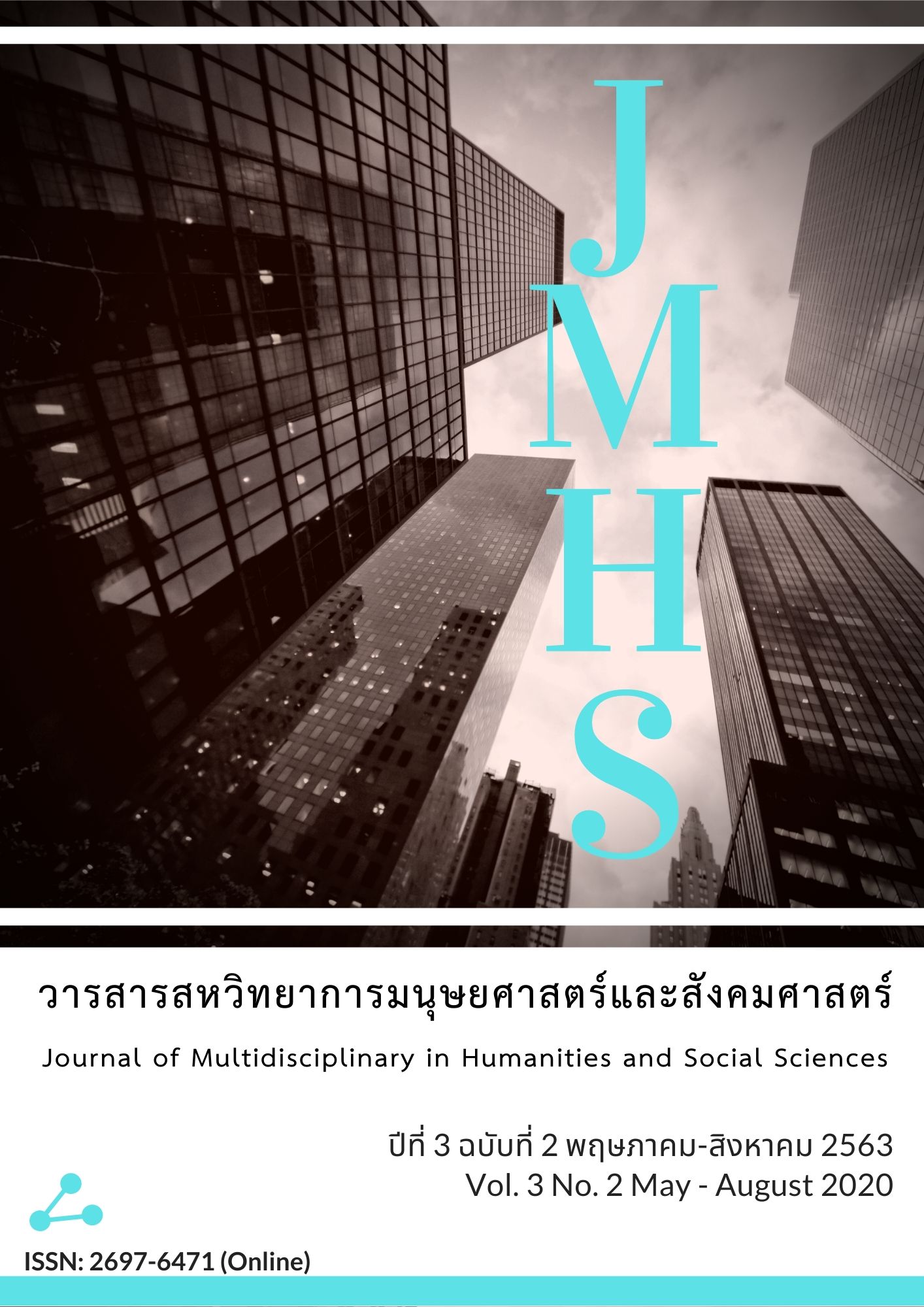A Holistic Marketing Strategy for Spa Businesses to Welcome Chinese Tourists
Main Article Content
Abstract
This article aims to present a holistic marketing strategy for spa businesses in Thailand to welcome Chinese tourists. Research was performed by reviewing academic documents, textbooks, research and other documents from online sources by means of content analysis, in order to combine the knowledge obtained from these sources into a guide for owners of spa businesses on how to run their businesses effectively and produce products and hospitality services to satisfy Chinese tourists, who are targeted as valuable customers. The resulting holistic marketing strategy to welcome Chinese tourists can be divided into four main components, namely relationship marketing, integrated marketing, internal marketing and performance marketing.
Article Details
Views and opinions appearing in the Journal it is the responsibility of the author of the article, and does not constitute the view and responsibility of the editorial team.
References
กรมพัฒนาธุรกิจการค้า กระทรวงพาณิชย์. (2560). กรมส่งเสริมการค้าระหว่างประเทศ, 2558. ธุรกิจสปาไทย. สืบค้นเมื่อวันที่ 7 มิถุนายน 2563 จาก http://www.ditp.go.th/contents_attach/143532 /143532.pdf.
นกวรรณ คณานุรักษ์. (2553). การตลาดแบบองค์รวมและการตลาดภายใน. Marketing and Branding for Quality. สืบค้นเมื่อวันที่ 7 มิถุนายน 2563 จาก http://www.tpa.or.th/publisher/pdfFile DownloadS /FQ150_p086-88.pdf.
นวพร สังวร และ สุพรรณี ชีนะเภท. (2559). กลยุทธ์การตลาดของธุรกิจขนาดย่อมสู่ประชาคมเศรษฐกิจอาเซียน. คณะบริหารธุรกิจและเทคโนโลยีสารสนเทศ. มหาวิทยาลัยเทคโนโลยีเทคโนโลยีรามงคล.
ภักดี กลั่นภักดี. (2560). ปัจจัยด้านมาตรฐานของสถานประกอบกิจการสปาเพื่อสุขภาพระดับสากลที่มีอิทธิพลต่อความพึงพอใจในการใช้บริการของนักท่องเที่ยวชาวต่างชาติ (วิทยานิพนธ์ศิลปศาสตร์มหาบัณฑิต). มหาวิทยาลัยธุรกิจบัณฑิตย์, กรุงเทพมหานคร.
สรรเพชญ ภุมรินทร และอานนท์ ศักดิ์วรวิชญ. (2560). การแบ่งกลุ่มนักท่องเที่ยวชาวจีนตามพฤติกรรม การท่องเที่ยวในประเทศไทย. วารสารการท่องเที่ยวไทยนานาชาติ, 13(1), 99-132.
สุเนตรตรา จันทบุรี. (2559). โอกาสและความสามารถในการแข่งขันของธุรกิจสปาและนวดแผนไทย. วารสารเกษมบัณฑิต, 17(2), 49-63.
สำนักธุรกิจบริการและโลจิสติกส์การค้า กรมส่งเสริมการค้าระหว่างประเทศ. (2558). ธุรกิจสปาไทย.สืบค้นเมื่อวันที่ 12 พฤษภาคม 2563 จากhttps://www.ditp.go.th/contents_attach/143532/ 143532.pdf.
Hennig, T.T, Gwinner, K. P., & Gremler, D. D. (2002). Understanding Relationship Marketing Outcomes: An Integration of Relational Benefits and Relationship Quality. Journal of Service Research, 4(2), 230–247.
Kaplan, R. & Norton, D. (1992). The Balanced Scorecard—Measures That Drive Performance. Harvard Business Review, 70(1), 71-79.
Kawano, Sho., Lu, Joshua., Tsang, Ricky., & Liu, Jingyuan., (2015). The Asian Consumer: The Chinese Tourism Boom. New York: Goldman Sachs Group.
Kotler, P & Keller, K. L. (2016). Marketing Management. (15th ed.). New Jersey: Prentice Hall.
Lovelock, C. & Wirtz, J. (2007). Services Marketing People, Technology, Strategy. New Jersey:
Prentice Hall.
Mahoney,T. A. and Weitzel, W. (1969). Managerial Models of Organizational Effectiveness. Administrative Science Quarterly, 14(3), 357 – 365.
Stock, J. R. (1997). Applying Theories from Other Disciplines to Logistics. International Journal of Physical Distribution & Logistics Management, 27(9), 515-539.
The Federation of Tourism Industries of Thailand. (2017). Annual Report 2017. Bangkok: Ministry of
Tourism and Sports.
United Nations World Tourism Organization, (2017). Outbound Tourism - Trips Abroad By Resident Visitors to Countries of Destination. Madrid: World Tourism Organization.
Yazici, S. (2010). Towards Corporate Sustainability: The Link between Business Ethics, Corporate Governance and Social Responsibility. Istanbul Universitesi Siyasal Bilgiler Fakultesi Dergisi, 43, 1-17.


